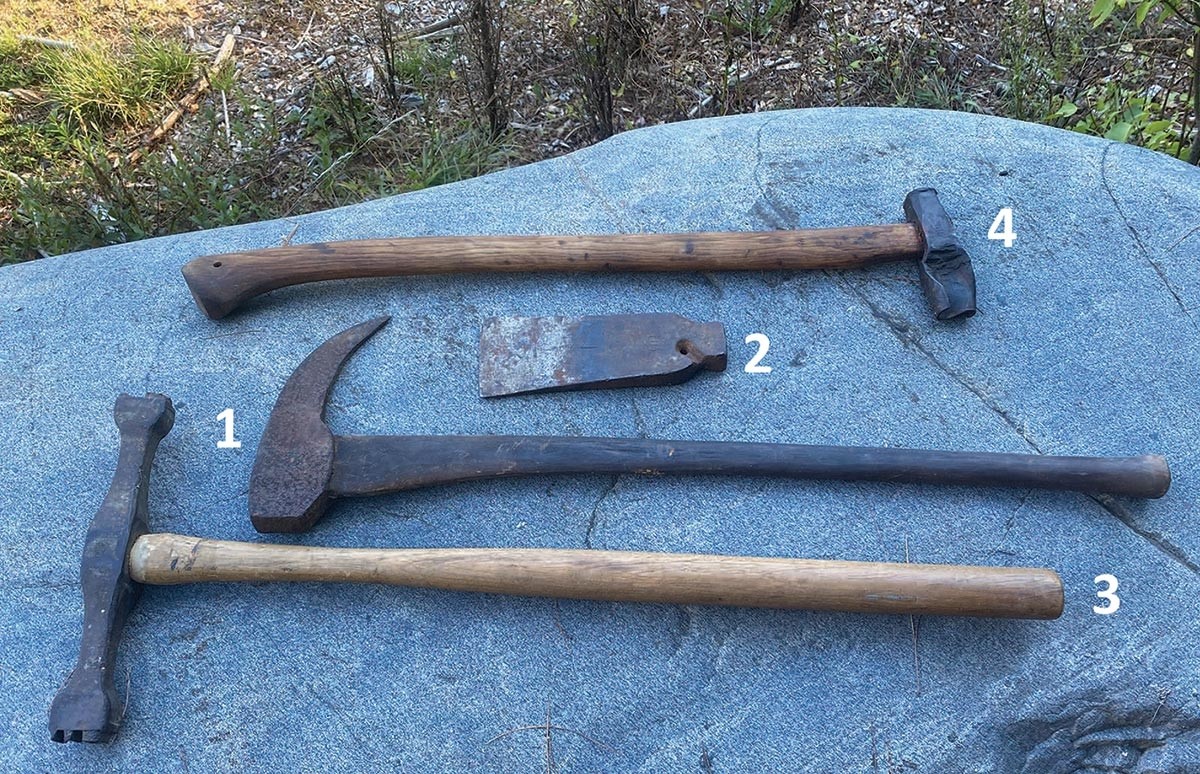Axes and crosscut saws have survived in the American mind as evidence of our utilitarian relationship with forests. Most of the crosscut saws I see today are hung above mantles or serve as a canvas for amateur nature paintings. However, there are other tools that were equally important in the early timber trades that receive relatively little fanfare and should be celebrated as well.
Take the hookaroon, (tool 1) for example, which is a literal back saver. The hookaroon was developed to prevent bending over to pick up or drag a small log. Hookaroons are often confused with a close cousin, the pickaroon, which sports a straight pick that angles away from the handle. This allows for a flicking motion that’s handy for releasing firewood. However, the same technique can be used with the hookaroon by simply applying less force for logs you wish to move by flicking instead of dragging.
Another tool that was essential during the crosscut saw era of the late 19th and early 20th centuries was the steel felling wedge. (tool 2) The first thing you’ll notice about the wedge is how thin it is compared to modern plastic wedges. The primary purpose of these wedges was to prevent pinching the crosscut saw when a tree had backlean. Because the kerf of the crosscut saw was so narrow, the wedge needed to be equally narrow. These wedges were essential not just for felling, but also to prevent pinching when bucking the tree into logs. In recent years, antique felling wedges have developed collector status and often bring good money.
Spring log drives were the culmination of a long winter of hard work. Log drives (and the resulting log jams) made for dangerous work, considering frigid temperatures and the risk of being pinned under a log. Because multiple timber companies used the same rivers and lakes, the log drivers worked under a cooperative system in which each timber company paid based on the board-foot volume they were moving. To clarify log ownership, each company developed and registered their own log stamp that was driven into the end of the log and helped to prevent ownership conflict. Here is an example of a double-sided stamping hammer (tool 3) from Great Northern in Maine, as well as a single-sided stamping hammer (tool 4) from Paul Smith’s Timber Company in the Adirondacks. As with steel felling wedges, stamping hammers have become highly collectable, especially because their production was limited and, in some cases, regulated to discourage fraudulent log markings.



Discussion *